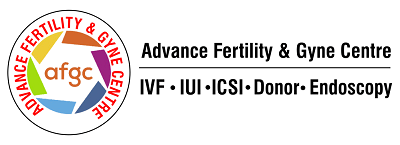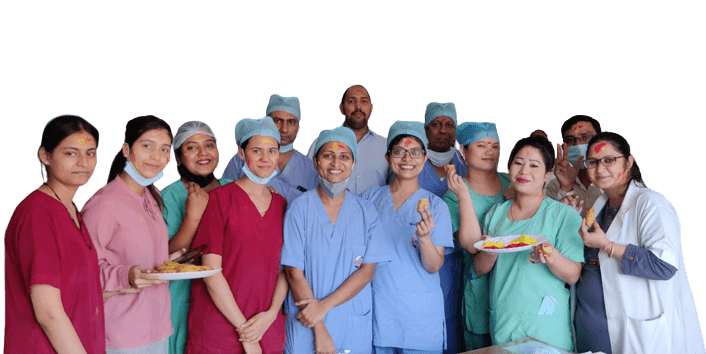How to Increase Fertility in Women
Fertility rarely has a single cause. For many women it’s a quiet interplay of biology, lifestyle and timing — and while some factors are fixed, many others can be changed. That’s the hopeful message: by tuning into your body, adjusting everyday habits and asking for the right medical help at the right time, you can stack the odds in favour of conception.
Factors that affect fertility in women
The most powerful single factor affecting a woman’s chance of conceiving is age. Women are born with a finite number of eggs, and both the number and quality of eggs decline with time; after the mid-30s this decline accelerates and the risk of chromosomal abnormalities rises. While age is not destiny — many women conceive healthy pregnancies later in life — it is an important piece of the fertility puzzle and helps explain why timing matters. PMC
Beyond age, hormonal balance is central. Regular ovulation depends on an orchestra of signals from the brain and the ovaries; disruptions from conditions like polycystic ovary syndrome (PCOS), thyroid disease, or elevated prolactin can blunt or stop ovulation altogether. Structural problems also play a role: damaged fallopian tubes, uterine fibroids, polyps or intrauterine adhesions can physically block the path between sperm and egg or interfere with embryo implantation. Environmental exposures — from endocrine-disrupting chemicals in plastics and pesticides to air pollution and heavy metals — contribute more quietly but measurably, affecting ovarian function and the uterine environment. PMC+1
Finally, metabolic health and body composition are major determinants. Obesity and insulin resistance are associated with poorer egg quality, ovulatory dysfunction and higher miscarriage rates; conversely, very low body weight or extreme exercise that reduces body fat can halt menstrual cycles and prevent ovulation. Lifestyle factors such as smoking, excessive alcohol, chronic stress, poor sleep and long-term exposure to toxins also erode fertility over time. PMC+1
Lifestyle habits that boost fertility
If you’re trying to conceive, lifestyle is where you can take immediate, practical action. Start with weight: aim for a body composition that supports regular cycles — not the lowest number on the scale, but a stable, healthy weight that supports hormones and energy balance. For many women, modest weight loss (if overweight) or gaining a little if underweight leads to restored ovulation and improved fertility. PMC
Exercise matters, but moderation is key. Regular, moderate activity improves insulin sensitivity, mood and cardiovascular health — all helpful for fertility. However, very intense training combined with low calorie intake can disrupt the hypothalamic signals that trigger ovulation. Good sleep and stress reduction are often underestimated. Chronic stress raises cortisol and inflammatory mediators that can interfere with reproductive hormones; practices such as mindfulness, yoga, counselling or simply improving sleep routines can yield real benefits. PubMed
Practical steps you can adopt today — many of which I’ve highlighted in the “Tips to Get Pregnant Naturally” series on your channel — include tracking your cycle to identify ovulation, timing intercourse for the fertile window, quitting smoking, moderating alcohol, and avoiding unnecessary exposure to household chemicals and plastics. Your videos give short, actionable recommendations (timing, lifestyle swaps, and preconception checklists) that make this advice easy to follow in everyday life. YouTube+2YouTube+2
Nutrition and diet for better fertility
Food is foundational. Research consistently shows that overall dietary pattern matters more than single “superfoods.” Diets that emphasize whole grains, vegetables and fruit, healthy fats (notably long-chain omega-3s), legumes and lean proteins — in other words, Mediterranean-style patterns — are associated with better fertility outcomes compared with Western diets high in trans fats, refined sugars and processed foods. Micronutrients matter too: adequate folate, vitamin D, iron, iodine and certain B vitamins support egg maturation, hormone synthesis and early embryo development. PMC+1
Practical, cost-sensible advice: prioritize whole, minimally processed foods, include fatty fish or plant omega-3 sources a couple of times a week (watch mercury limits), choose whole grains over refined ones, and include a daily prenatal or preconception multivitamin that contains folic acid. If you have specific deficiencies (for example, low vitamin D or iron), correction under medical supervision is helpful. Your channel’s short segments on “Diet in Fertility Treatment” echo these principles and offer simple plate-based examples that are easy to adopt. Instagram+1
Medical treatments to increase fertility
When lifestyle changes are insufficient or an underlying medical issue is identified, modern medicine offers a broad toolbox. For ovulatory disorders, medications such as letrozole or clomiphene can restore predictable ovulation; injectable gonadotropins are an option when closer cycle control is needed. Structural issues may be approachable with minimally invasive surgery to remove fibroids, polyps or adhesions, or with procedures to repair tubal damage where appropriate. asrm.org+1
Assisted Reproductive Technologies (ART) — IVF and ICSI among them — are increasingly common and effective options for a range of conditions, including tubal disease, severe male factor infertility or when prior treatments have not succeeded. Fertility preservation through egg or embryo freezing is another important strategy, particularly for individuals who need to delay childbearing for personal or medical reasons. Your videos that explain the step-by-step IVF process and episodes on recurrent implantation failure provide clear context for patients considering these routes. They do a good job turning complex procedures into understandable steps and set realistic expectations about success rates and timeline. YouTube+1
When to consult a specialist
Knowing when to seek specialist input can save time and preserve options. Common guidance is straightforward: if you’re under 35 and have tried to conceive for 12 consecutive months without success, or if you’re 35 or older and have tried for six months, an evaluation is warranted. But there are earlier signals that should prompt a more immediate assessment: irregular or absent cycles, severe menstrual pain, a history of pelvic infection or surgery, known endocrine disease (like thyroid disease or PCOS), recurrent pregnancy loss, or known male partner factors. PubMed+1
A baseline fertility work-up often includes cycle evaluation, hormone panels (FSH, LH, TSH, prolactin, AMH for ovarian reserve), a semen analysis for the partner, and uterine/tubal imaging when indicated. These investigations do not rush you into aggressive treatment — they clarify causes and help you and your clinician choose the most appropriate next steps, whether lifestyle, medication or ART. Your educational videos on evaluation and specific conditions such as low AMH or ovulation induction are practical primers patients can watch before or after a consultation to better understand the tests and their implications. YouTube+1
A realistic and hopeful approach
Fertility care balances hope with realism. Many factors are within your control: nutrition, weight, sleep, toxin exposure, and the decision to stop smoking or reduce alcohol. Other elements, like age or certain structural problems, require clinical solutions. By combining sensible lifestyle adjustments with timely medical assessment — and using reputable, evidence-based resources (including short, practical videos that explain the “why” behind recommendations) — many couples dramatically improve their odds of conception.
If you’re creating a preconception plan, consider a short checklist: review medications and supplements with your doctor, start a folate-containing multivitamin, optimize weight and sleep, identify the fertile window, and get basic blood tests and semen analysis if conception doesn’t happen within the recommended timeframe. If you’d like, I can tailor a printable checklist or patient handout based on the practical tips in your YouTube series so readers can follow the steps day by day.
References
Dr. Kaberi Banerjee — Advance Fertility (YouTube & website)
“Tips to Get Pregnant Naturally Tip #3” — Dr. Kaberi Banerjee. YouTube. YouTube
“Tips to Get Pregnant Naturally Tip #4” — Dr. Kaberi Banerjee. YouTube. YouTube
Lifestyle & Conception — Playlist, Dr. Kaberi Banerjee (contains short videos on diet, timing, lifestyle). YouTube
“How to induce ovulation?” — Dr. Kaberi Banerjee | Medtalks (YouTube). YouTube
“Know About Low AMH” — Dr. Kaberi Banerjee (YouTube). YouTube
Advance Fertility & Gynaecology Centre — Official website (Dr. Kaberi Banerjee). drkaberibanerjee.com
Selected evidence-based literature & guidelines
Amanvermez R, et al. An update on ovarian aging and ovarian reserve tests. (Review on ovarian aging and reserve). PMC
Donato M, et al. The Role of Lifestyle Intervention in Female Fertility. (2025 review). PubMed
“Diet and female fertility: doctor, what should I eat?” — Review article summarizing dietary patterns and fertility. PubMed
Female Fertility and the Nutritional Approach: The Most Essential Aspects. (Review linking Mediterranean diet and fertility). PMC
ASRM / International guidelines: Recommendations from the 2023 International Evidence-Based Guideline for assessment and management of PCOS. asrm.org
Cedars M. Evaluation of Female Fertility — AMH and Ovarian Reserve (Review summarizing AMH utility). PubMed

